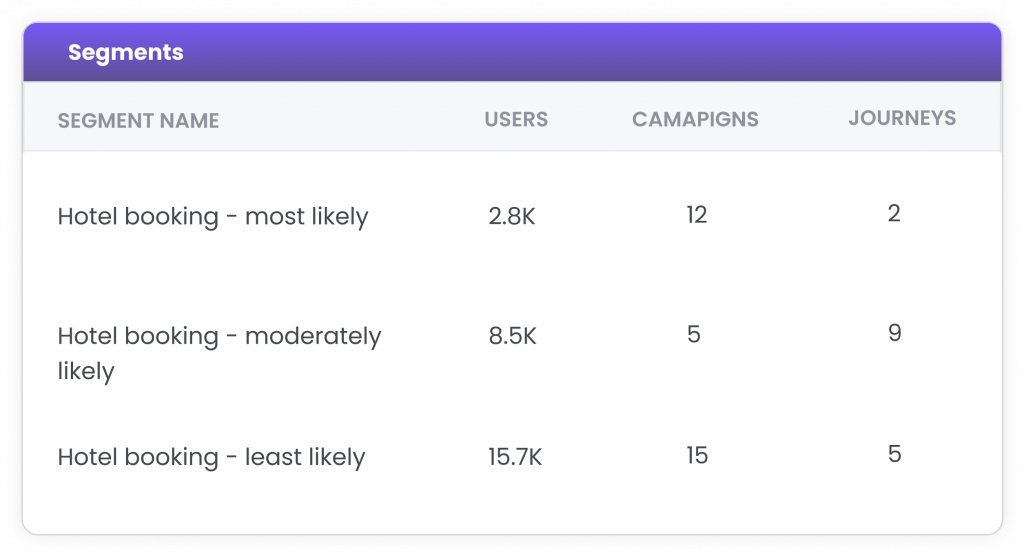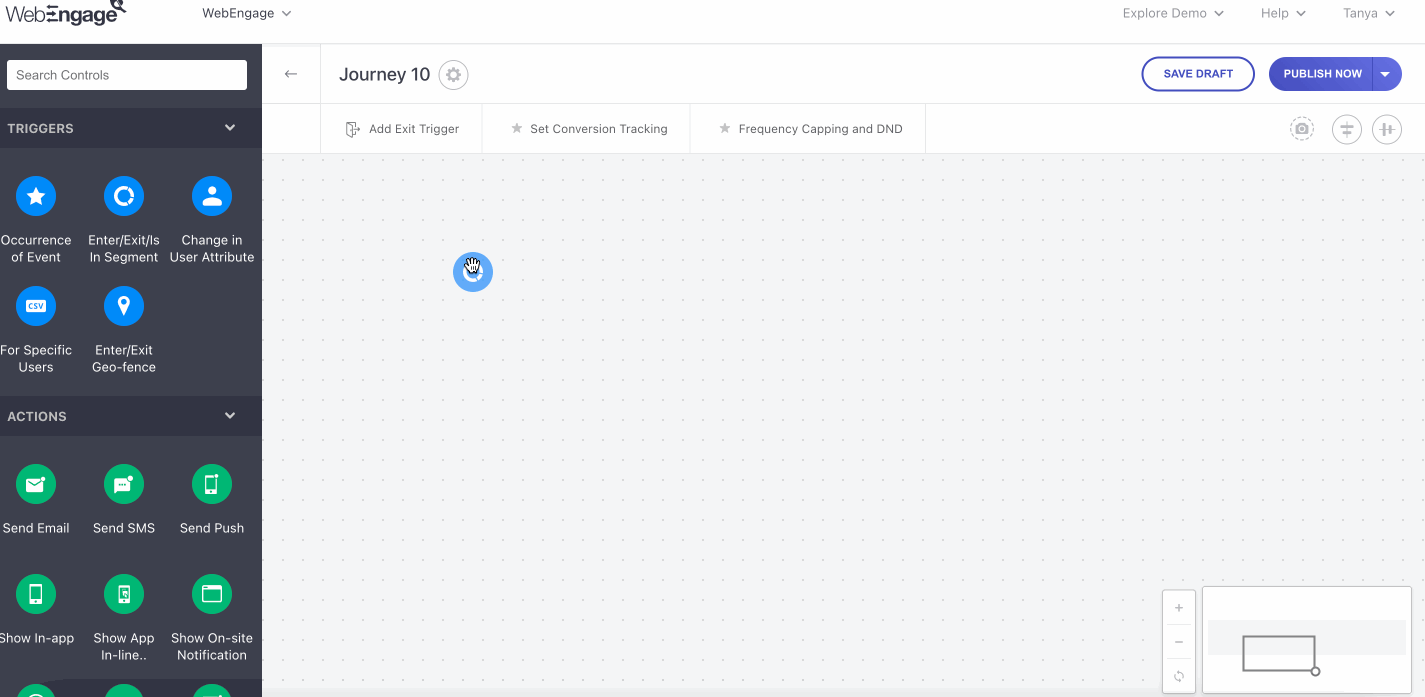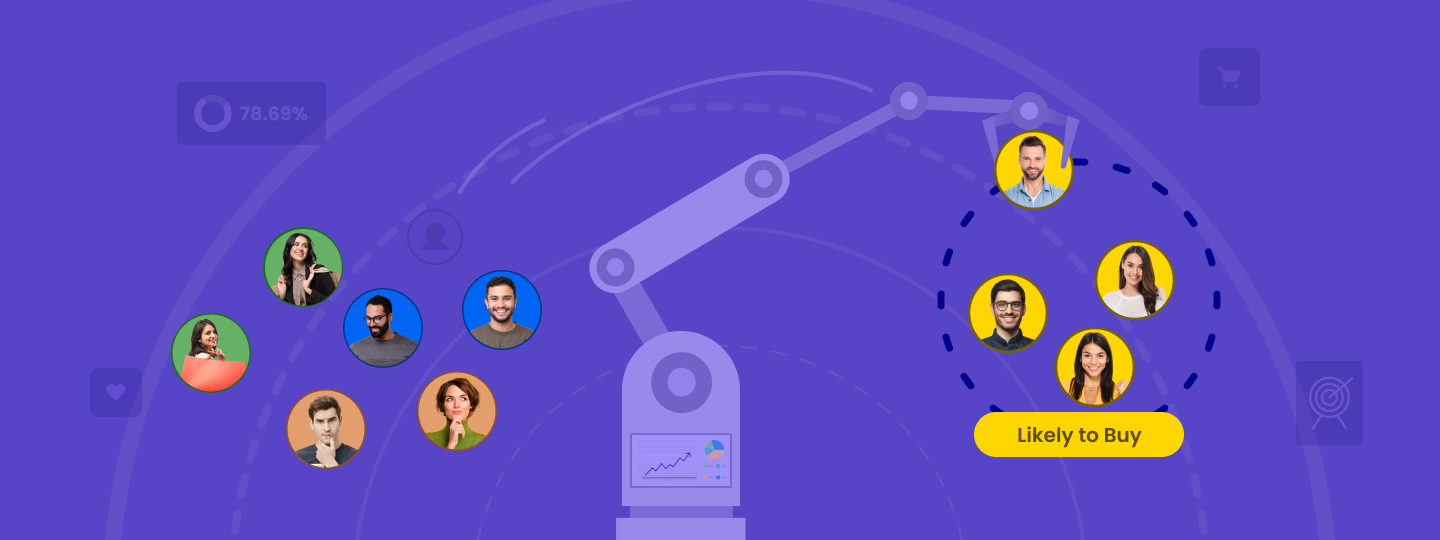Like driving a Tesla on autopilot, machine learning has facilitated marketing efforts with improved decision-making, hyper-personalization, and content optimization capabilities. And a majority of its application is focused towards building a personalized message strategy, such as providing recommendations based on a user’s historical data. What if you could apply the same machine-learning algorithm to build a target audience based on their likeliness to purchase or subscribe?
Understanding predictive segmentation
Going beyond the traditional segmentation method, predictive segmentation is a technique that allows you to create segments based on the user’s propensity for a defined action, such as the likelihood of purchase.
Like creating lookalike audiences, predictive segments leverage machine learning to create a list of users with a ‘likeliness to’ perform a certain action, such as likely to purchase or churn. Predictive segmentation is more powerful than the current segmentation methodology because it relies on a marketer’s ability to segment the audience, restricted to available user attributes and event data.
Consider this,
[Option A] Creating a segment of female users between the age of 18 to 45
[Option B] Creating a segment of female users who would be likely to make a purchase for an amount greater than Rs.5,000
Wouldn’t option B allow us to execute a better contextual and targeted message strategy, as opposed to just female users between the age of 18 to 45? Targeting female users between 18 and 45 might not guarantee that all users in this segment would be interested in purchasing. Instead of creating a broad segment, targeting users who would be more likely to purchase beyond a specific amount would be more fruitful towards driving conversions.
Introducing WebEngage’s Predictive Segments
Predictive segmentation in WebEngage allows you to create a segment based on a specific business goal. For example, you can use it to create a segment of users likely to make a purchase in the next 15 days. Our machine learning algorithm will then predict a set of users and create 3 lists – most likely, moderately likely, and least likely- for the selected business goal.

With Predictive Segments, you can:
- Contextualize message strategy based on the business goal selected. For example, users who are likely to make a purchase can be shown personalized recommendations based on products viewed
- Select multiple business goals, such as predict users likely to make a hotel or flight booking
- Apply filters based on user attributes such as product category or price. For example, users are likely to purchase shoes.
- Select the timeline to predict for the business event specified (currently, you can select within the range of 7 days to 180 days)
Tip: It is advised to select a smaller timeline to accommodate user behavior and attribute changes.
These lists can then be used in your one-time or automated marketing campaigns and periodically auto-refreshes.
Predictive Segments in action
Predictive Segments can be used in stand-alone campaigns and journeys across channels. For standalone campaigns, select the required segment under the Audience tab.
To include Predictive Segment in journeys, follow these steps:
- Select the Enter/Exit/Is in Segment trigger
- Pick the option ‘is already in’ and select the required predictive segment from under Static lists

12 Ways to make the most of Predictive Segments in your marketing campaigns
1. Convert product views into purchases
Create a predictive segment for users likely to purchase. Further, this segment can be refined as per user attributes to define a specific category or price range. For example, create predictive segments for users who are likely to make a purchase for an amount greater than Rs. 5,000.
Business goal used: purchase_made
2. Predict users likely to purchase insurance for an amount greater than Rs.10,000
Create predictive segments based on likeliness to purchase insurance and nudge users with targeted communications. For example, create a list of users likely to purchase insurance for an amount greater than Rs.10,000. This can help you identify which insurance products to promote to get the maximum number of users to purchase.
Business goal used: insurance_purchased
3. Drive enrollments for data science courses
Identify learners likely to purchase Data Science courses and highlight top or best-performing courses with the help of our Recommendation Engine. For example, create a segment of users likely to purchase Data Science courses and nudge them to enroll by showing best-performing courses via email communication.
Business goal used: course_purchased
4. Identify potential customers to make a flight or hotel booking in the next 15 days
Create a segment of users likely to make a flight or hotel booking and nudge them with special discounts or offers to make a purchase.
Business goal used: flight_booked & hotel_booked
5. Predict users who are likely to purchase a subscription
Convert free users into paid users by creating a segment of users likely to purchase a subscription. Further, filter this segment based on price to contextualize message strategy for different subscription offerings.
Business goal used: subscription_purchased
6. Convert website visitors into newsletter subscribers
Identify users most likely to subscribe to your business newsletter and increase user engagement.
Business goal used: newsletter_subscription
7. Predict potential players to increase online game adoption
Engage more users to engage with your gaming platform by creating a segment of users most likely to play a game on your website. Further, lead these users, by way of drip campaigns, to partake in cash-based games.
Business goal used: game_played
8. Increase your loyal customer base by identifying customers likely to spend more than Rs.15,000
Loyal users are likely to be more sticky and contribute to an overall increase in conversions for your business. By creating a predictive segment of users likely to make a purchase for an amount greater than Rs.15,000, you can leverage special discounts and incentivize future purchases by assigning points to their accounts after each purchase.
Business goal used: purchase_made
9. Incentivize customers most likely to churn with customized offers and discounts
Similar to creating segments of users likely to purchase, you can also leverage predictive segments to prevent user churn. For example, create a segment of users who are likely to churn and get them to make a purchase through special discounts and offers.
Business goal used: purchase_made (least likely)
10. Devise a promotion strategy based on the amount spent on a flight or hotel booking
Customize your promotion strategy for users likely to make a flight or hotel booking. Further, create nuances to this segment by filtering based on the amount spent. For example, create a segment of users likely to make a flight or a hotel booking for an amount greater than Rs.10,000 and a separate segment for users likely to spend less than Rs.10,000. Devise your promotional strategy to offer both segments 20% and 10% discounts.
Business goal used: hotel_booked & flight_booked
11. Nudge users who are likely to raise a loan request
Reach out to potential customers who are likely to raise a loan request and get them to submit a call-back and assign a relationship manager to help them raise a loan request successfully.
Business goal used: loan_request_made
12. Drive webinar registrations for your learning platform
Get more users to register for webinars by creating a predictive segment. Later, this segment can be nurtured into course buyers based on the webinar category they sign up for or are interested in.
Business goal used: webinar_registration
Wrapping up
Description segmentation allows you to narrow down on the audience based on user actions and attributes. However, with the help of machine learning, predictive segments can help contextualize your message strategy and target users likely to perform an action. We hope you try out this feature and share your feedback. If you need more assistance, get in touch with your Customer Success Manager or reach out to product@webengage.com to get started.
Test and measure the impact of your campaigns with WebEngage. Take a demo today!


































 Harshita Lal
Harshita Lal



